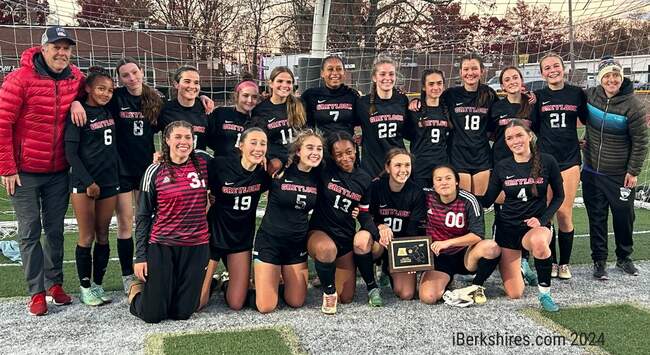Williamstown Pursues Grant for Water St. Sidewalks
 |
"I think it would more advantageous to the town if it looked like Spring Street," said Town Manager Peter Fohlin at Monday's Selectmen's meeting. That would mean wider, standard 5-foot sidewalks along both sides from about the site of the former town garage to the end of the Cable Mills property.
The reconstruction, even in part, could do much to attract people to continue from Spring Street and along Latham Street to Water, he said. "I think any business on that street is a candidate for growth."
Fohlin said the Public Works Economic Development grant proposal was being submitted as a three-tiered plan in hopes of getting at least part of the funding. "I think we're going to try to put this in front of the state in this kind of layered or tiered position."
The first layer would be the construction of 5-foot concrete sidewalks and granite curbs along the east side of Water Street from Linear Park to the end of the Cable Mills property. The current sidewak is degraded and rough.
Fohlin said the mill's location limits the width of the sidewalk but it possibly could be wide enough for a grass divider between the walkway and the curb. Extending the walkway farther north or south would run into difficulties, he said. The geometry of the north end, for example, with its shops and the Fire Department, was to complex to entertain within this grant.
The second layer would be the installation of the same type of sidewalk along the west side, beginning at about the former town garage, now a parking area, and south about the same length as the east side.
Extending further south would be problematic because of the steep hillside, which would require "a million-dollar retaining wall."
It would include a curb cut for the parking area, which is now accessed by through Heating Plant Drive.
Both sidewalk projects would cost about $360,000. They would not include, Fohlin stressed, the burial of any utility lines because the cost would be far exceed the grant funding. It might, however, include moving the overhead lines that now criss-cross the road all to one side.
The third, and major, layer would be widening of the road to accommodate street parking. Fohlin did not have great hopes for that proposal because it would mean the State Highway Department "would have to share our vision."
Water Street along that section is a state highway; MassHighway would not only to agree to the widening, it would have to sign off on the parking, currently prohibited on state highways.
Fohlin anticipated several possibilities: the state would fund the reconstruction of the east side, both sides, or the east side and the road widening, which would also encompass the west side sidewalk project. At the very least, the town could get the east side done and try again for the west side.
The Selectmen endorsed the proposal wholeheartedly.
"I think you're smart in having a vision to take it one at a time," said Selectman Thomas Costley, who could see people walking from Spring to Water Street if the sidewalks were well-lit and in good condition.
Chairwoman Jane Allen told how she had run into a couple from Lenox who were disappointed that downtown Williamstown seemed limited to Spring Street. "'Is this all there is to Williamstown?' they asked."
Fohlin said if the proposal does not receive funding in the first cycle, it will be held over to a second cycle. After that, the town would have to start all over again.
In other business:
Revenues fell slightly short of last year's estimates but expenses dropped even lower, allowing for the transfer.
T















